655: 2020 Predictions (and 2019 Predictions Look-back)
01-01-2020
2020 Predictions (and 2019 Predictions Look-back)
PropertyInvesting.net team
2020 Predictions (and 2019 look-back)
More objective guidance and insights for property investors. Our aim is to help you improve your investment returns, flag key risk areas and stimulate strategic thought so you can position your portfolio to maximize gains, for the thousands of daily visitors to the website and the thousands of people signed up to your Newsletter. This Newsletter describes our 2020 Predictions and takes a Look-back Review of our 2019 Predictions for good order.
We start with our view on 2020 property prices in the UK followed by economic criteria. Weve been performing this analysis for the last 15 years now. All our previous predictions can be reviewed on the website in our Special Reports section, so you can judge for yourself how accurate we have been.
632: 2019 Predictions (and 2018 look-back)
612: 2018 Predictions (and 2017 look-back)
589: 2017 Predictions (and 2016 look-back)
557: 2016 Prediction (and 2015 look-back)
553: 2015 Prediction (and 2014 look-back)
496: 2014 Prediction (and 2013 look-back)
456: 2013 Prediction (and 2012 look-back)
409: 2012 Prediction (and 2011 look-back)
356: 2011 Prediction (and 2010 look-back)
301 2010 Prediction (and 2009 look-back)
245 2009 Prediction (and 2008 look-back)
179 2008 House Price Predictions Global
102 Property Price and Economic Predictions for 2007
For 2020, there will be a number of criteria that will pull property prices one way or the other, which we outline below:
Positive Criteria for Property Prices in 2020
-
Tory majority provides business-investment stability for the next 5 years
-
Tory policies to reward Midlands/North for Tory votes leading to increasing investment outside London and movement of government jobs out of London to places like Leeds, Manchester, Newcastle and Birmingham
-
Business wake up to the opportunities for Brexit in London as safe haven low
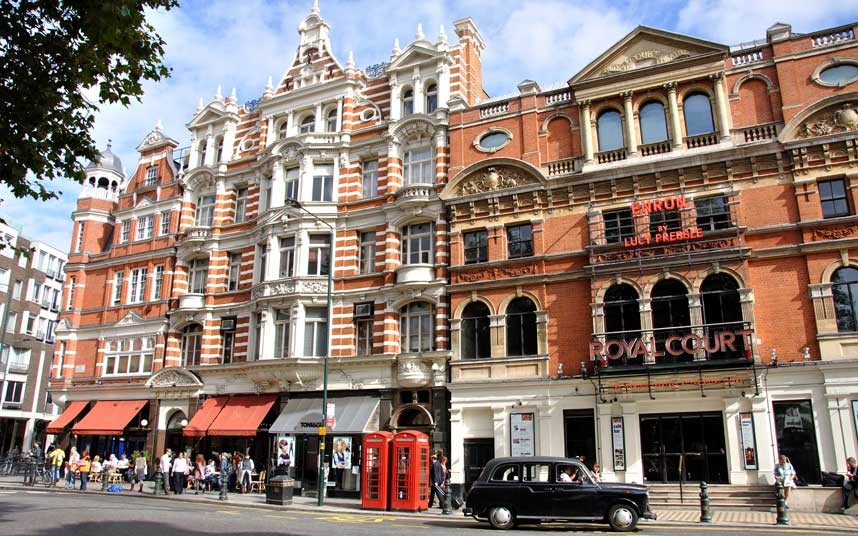 tax zone for global business leading to financial boom in London and London house prices increasing
tax zone for global business leading to financial boom in London and London house prices increasing -
Lack of house building, particularly from the period 2017-2019 due to Brexit uncertainties whilst demand rapidly rises after Tory Election victory 12 Dec 2019
-
Elizabeth Line (Crossrail 1) to open end 2020
-
Fairly robust rental market due to buy-to-let property shortages particularly in London and southern England due to lack of buy-to-let investors post tax increase though slightly lower net migration keeping lead on demand
-
Likely strengthening UK Sterling after Tory victory leading to trend towards lower interest rates - London likely to continue to boom with expanding population and inward migration despite the Brexit doom-mongers and Crossrail opening end 2020
-
Booming UK population, birth rate and immigration with subdued emigration and subdued GDP growth
-
Continuing wealthy global citizens escaping economic problems in 2019 - this is likely to be from Saudi-Iran (proxy wars), Africa (unstable countries/corruption), Venezuela (economies tanking), mainland Europe (escaping poor jobs prospects), Russia (flight to safe haven) and China and Hong Kong (fear of government asset seizures, super-rich hedging)
-
Reducing threat of terrorism in the London/UK (as ISIS all but defeated and UK generally absent from Iran-US warring)
Negative Criteria for Property Prices in 2020
-
Some residue fears particularly amongst Remainers of either a hard final Brexit trade deal end 2020
-
Fears of war between USA (Saudi) and Iran
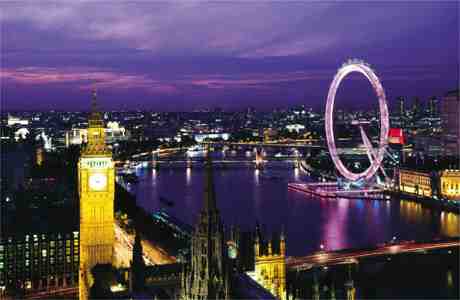
Increasing oil prices end 2019 feed through into higher inflation and possible interest rate rises by mid 2020 -
Rental demand remaining fairly robust in view of continued high net migration levels of 226,000 (year to end Mar 2019) (down from 350,000 early 2017)
-
Mortgages remains fairly accessible though price-wages still very high in southern England
-
Global economic slowdown
-
Reduced trade with Europe due to post Brexit factors after 31 Jan 2020
-
High levels of debt spending in UK and western countries
-
Continued effects of Tory punitive taxation of buy-to-let exacerbating the housing crisis leading to higher rents and shortage of investment in housing Unstable fiscal-tax regime for buy-to-let based on Tory track record now including an end to Section 21
-
Continued public sector jobs losses (except NHS) particularly in areas exposed to these jobs - such as rural areas and northern/western areas in Britain
-
High levels of deposits required even with "help-to-buy" measures increases in deposits for buy-to-let are likely after the draconian new buy-to-let tax measures announced 2015-2016
-
Difficulty getting mortgages for the average person even with "help-to-buy" measures
-
Lending to salary multiples offered by banks not keeping pace with rising house prices
Trend: Overall, we believe the positive factors will outweigh the negative factors hence this p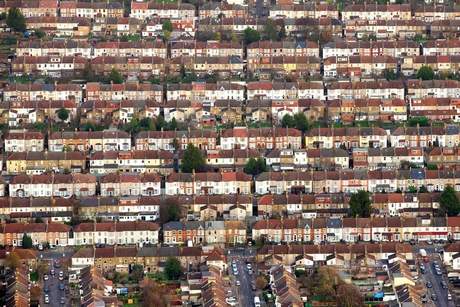 oints to increase house prices across the board in the UK. The twin threats of a Labour government and further Brexit turmoil have been eradicated post Dec 12 2019 election. Expect the boom to start 6 January 2020 onwards. The high demand and low building levels should lead to increasing rental and house prices as the Labour threat has been eradicated for 5 years or more hence the threat of a socialist lead government is close to zero in a 4-5 year business time frame.
oints to increase house prices across the board in the UK. The twin threats of a Labour government and further Brexit turmoil have been eradicated post Dec 12 2019 election. Expect the boom to start 6 January 2020 onwards. The high demand and low building levels should lead to increasing rental and house prices as the Labour threat has been eradicated for 5 years or more hence the threat of a socialist lead government is close to zero in a 4-5 year business time frame.
Ripple Effect: The house price ripple effect will continue to fan out from London continuing to move through places like Leicester/Derby, Birmingham, Manchester, Leeds to places like Liverpool, Newcastle, West Cornwall and Cumbria. The largest house price increase are likely to be in areas over 130 miles from London, with housing shortages in all areas with expanding business activities. Further healthy increases in house prices are expected in Londons lower priced suburbs like Ilford, Dagenham, Milton Keynes, Dartford/Gravesend, Hatfield and Essex and north-eastern Kent - catching up with the rest of London. Some areas like Acton, Maidenhead, Abbey Wood, Forest Gate, Bond Street, Ealing and Paddington will further benefit from the opening of the Elizabeth Line (Crossrail 1) end 2020. Areas with strong business growth such as Slough, Reading, Maidenhead, Shoreditch-Whitechapel will also see prices robustly rising.
2020 Predictions

Property Price Predictions
1. London 3% (West London +4%)
2. SE England 2%
3. East Anglia +4%
4. Scotland +4%
5. SW England +4%
6. NW England +5%
7. Midlands +5% (East Midlands +5%)
8. Wales +5%
9. North England/NE +5%
10. Northern Ireland -1%
11. Yorkshire +5%
Note: Published CPI and RPI inflation will start year at 2.3% and drop to 1.8% by end 2019 as the effects of the oil price feed through (though real inflation will be more like 3%).
Rents
Rent rises will be in line with inflation rental property shortages will be counteracted by a reduction in net migration to levels flat living from Mar 2019 to end 2020 at 226,000 per annum (down from 360,000 mid 2016 before Referendum). Draconian tax increases on buy-to-let landlords will also cause a further tightening of the rental market particularly in London and SE England.
Other criteria
· US Dollar to the UK $1.33 / £1 - stable through 2020
· UK £ to the Euro £1 / 0.88 Euro Sterling slightly recovering to 0.88 end 2020 from 0.84
· Oil price will fluctuate in band $55/bbl to $75 (WTI) in 2019 - OPEC cutbacks larely offset higher oil production from US Texas Permian oil shale field.
· UK Gas remains firm at price 30p/therm
· UK Interest Rates no interest rate changes reducing inflationary pressures mean rate remain low
· FTSE100 index stays same to 7450 by end 2020
· UK Inflation CPI starts year rising from 1.8% end 2019 to 2.3% by end 2020
· UK GDP rises from 1.1% end 2019 to 2.2% by end 2020 as Tory majority provides growth and stability
· US-Iran direct war of sorts starts in earnest with significant tit-for-tat through 2020. Tensions between Saudi Arabia and Iran continue to stay high (with continued proxy war in Yemen). Russia possible invasion of eastern Ukraine. Nuclear arms race gathers momentum. Hotspots being US-North Korea, US-Iran, Israel-Palestine. 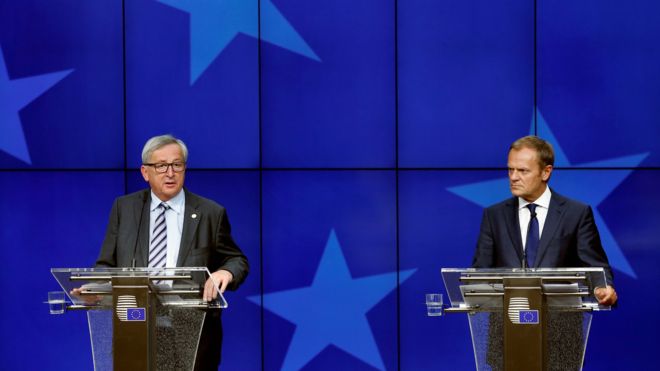
· Euro interest rates stay the same in 2019.
· US Interest rates start at 1.5% through 2020.
· UK unemployment continues to drop from 3.8% to 3.6% by end 2020 as economy picks up
· Wage inflation ~2.3% throughout 2020 in both private and public sectors above the general CPI inflation
· GDP growth London 2.2%, North 2%, Midlands 2%, Scotland 1.0%. Wales 1.7% (overall 2.2% for 2020)
· GDP China 6.3%, GDP India 5%, GDP Africa 2%, Global GDP 2.3%, UK 2.2%, USA 2.2%, Euroland 1.7% - as a whole over 2020
· Gold stays around $1450/ounce level, silver stays at $18/ounce level
USA debt situation Lowering tax burden, higher US oil production and business friendly regulation and ending some of the trade wars with China will help lift GDP growth from 1.1% to 2.2%. This should lift the pressure on the US dollar and debt situation unless a big recession starts. Trumps spending spree on infra-structure and military will also help business. Unemployment continued to drop. Threat of war with Iran, Russia, China and North Korea however will stay high in 2020
Russia: Sanctions continue to bite and Russia stays subversive and out of Trump direct way they may invade eastern Ukraine and increase their influence in Syria.
Middle East: House of Saud finances improve now oil prices have risen $65/bbl though budget does not balance until oil prices are around $90/bbl. Continued proxy war with Iran in places like Yemen, Iraq and potentially directly with Iran keep a lid on investment. Middle East and North Africa continue to be unstable with bad situations continuing in Libya.
China South China Sea: Possible military spats and escalation over disputed islands between USA/China and possibly Japan.
The Trump Effect: 2020 will be dominated by the US Presidential election with Donald Trump 50% chance of re-election (he may be impeached though this might not prevent him remaining in office being re-elected). Trumps behavior is likely to get more volatile and unstable with the threat of US-Iran war and China-USA trade war hanging over the economy.
Note: Just like the last few years predictions, sometime in the next 6 months to 4 years we expect a real economic-financial crisis in western developed nations caused by the US bond market meltdown. At this time, gold and silver prices will go ballistic (silver from $18/oz to $400/oz and gold from $1480/ounce to about $6400/ounce). The Dow Jones may rise, but inflation adjusted real terms will decline still in an overall cyclical bear market.
UK Politics
After Brexit 11pm 31 Jan 2020 the su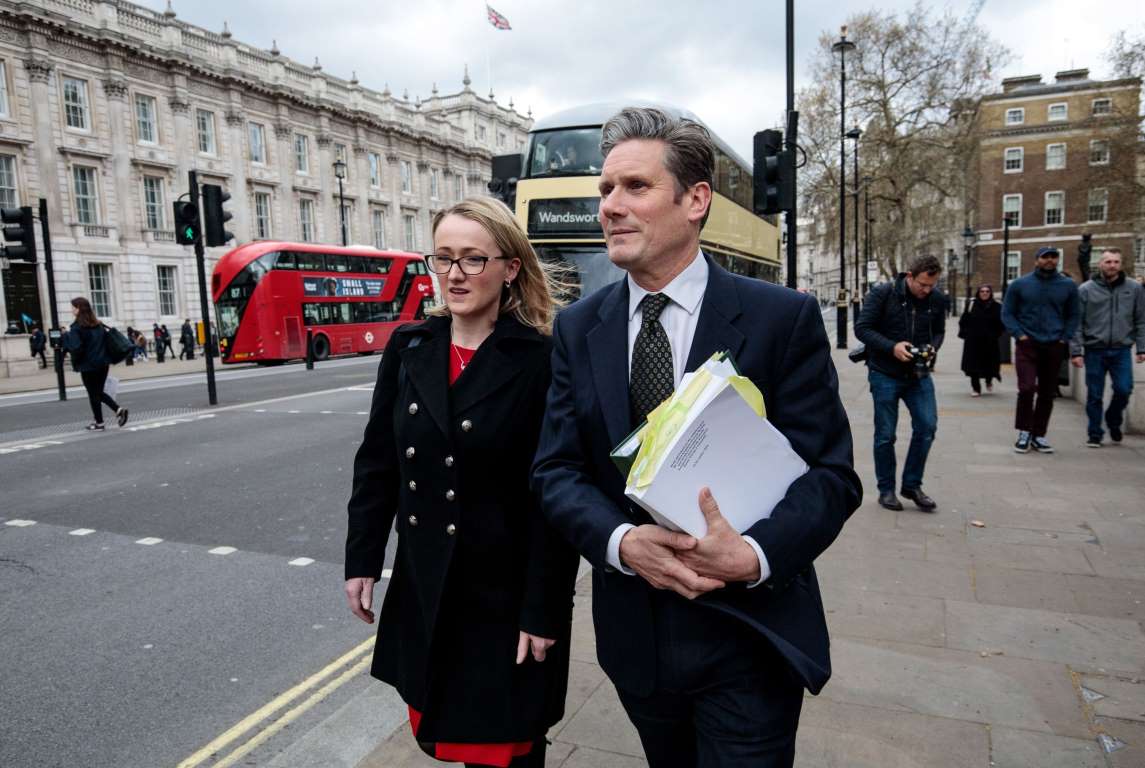 bject will get a lot less press and interest as the Tory party aim to negotiate a trade deal with the EU by end 2020. The big national topics are likely to be: 1) increasing NHS funding-projects; 2) northern/midlands development-investment; 3) for socialists who becomes Labour leader; 4) relationship with USA post election. On the Labour leadership the unions are likely to vote for Rebecca Long-Baily similar policies to Corbyn and northern women that could attract northern voters back. Moderate socialists for Sir Keir Starmer who would be by far the biggest threat in 5 years time to a Tory majority based in London though Labour dont need more London votes, and he was a disastrous shadow Brexit Secretary though he looks and sounds good! It looks like UKIP, nationalist and Brexit parties and likely a Reform party - have been killed off. SNP will try and get another Referendum but Boris Johnson will stop this and tensions with Sturgeon (who is not an MP in Parliament) will continue.
bject will get a lot less press and interest as the Tory party aim to negotiate a trade deal with the EU by end 2020. The big national topics are likely to be: 1) increasing NHS funding-projects; 2) northern/midlands development-investment; 3) for socialists who becomes Labour leader; 4) relationship with USA post election. On the Labour leadership the unions are likely to vote for Rebecca Long-Baily similar policies to Corbyn and northern women that could attract northern voters back. Moderate socialists for Sir Keir Starmer who would be by far the biggest threat in 5 years time to a Tory majority based in London though Labour dont need more London votes, and he was a disastrous shadow Brexit Secretary though he looks and sounds good! It looks like UKIP, nationalist and Brexit parties and likely a Reform party - have been killed off. SNP will try and get another Referendum but Boris Johnson will stop this and tensions with Sturgeon (who is not an MP in Parliament) will continue.
__________________________________________________
Lookback on 2019 Predictions.jpg)
For 2019, there will be a number of criteria that will pull property prices one way or the other, which we outline below:
Positive Criteria for Property Prices in 2019
· Lack of house building, particularly due to Brexit making builders more risk averse and raising building costs
· Elizabeth Line (Crossrail 1) to open in London starting Aug 2019 less talk of Crossrail 2 due to Crosrail 1 cost-time overruns delayed
· Fairly robust rental market due to buy-to-let property shortages particularly in London and southern England though lower net migration keeping lead on demand
and southern England though lower net migration keeping lead on demand
· London likely to continue to boom with expanding population and inward migration despite the Brexit doom-mongers and Crossrail opening
· Booming UK population, birth rate and immigration with subdued emigration and subdued GDP growth
· Continuing wealthy global citizens escaping economic problems in 2019 - this is likely to be from Saudi-Iran (proxy wars), Africa (unstable countries/corruption), Venezuela (economies tanking), mainland Europe (escaping poor jobs prospects), Russia (flight to safe haven) and China (fear of government asset seizures, super-rich hedging)
Negative Criteria for Property Prices in 2019
· Continuing fears of a Labour government in view of an unstable Tory minority government struggling to negotiate a good Brexit outcome fear of draconian new socialist government further targeting property and buy-to-let landlords (populist blaming for Labour/Tory induced housing crisis) - Correct
· Fears of either a nuclear war with North Korea or World Wars concerns about Saudi-Iran regional proxy wars and Russia (possible further Ukraine invasion) - Saudi-Iran regional war ongoing
· Dropping oil prices end 2018 feed through to lower UK inflation by March 2019 starts year 2.35 and dropped to 1.8% by Oct 2019 no interest rates hikes needed to control this inflation
· Rental demand remains fairly robust in view of continued high net migration levels of ~260,000 in 2019 (down from 350,000 early 2017) - Correct
· Mortgages remains fairly accessible though price-wages still very high in southern England - Correct
· No further interest rates rises required to defend the weakened Sterling and mitigate against inflationary pressures - Correct
· Global economic slowdown - Correct
· Reduced trade with Europe due to continued Brexit fears and trade uncertainties post March 2019
· High levels of debt spending in western countries - Correct
· Continued effects of Tory punitive taxation of buy-to-let exacerbating the hous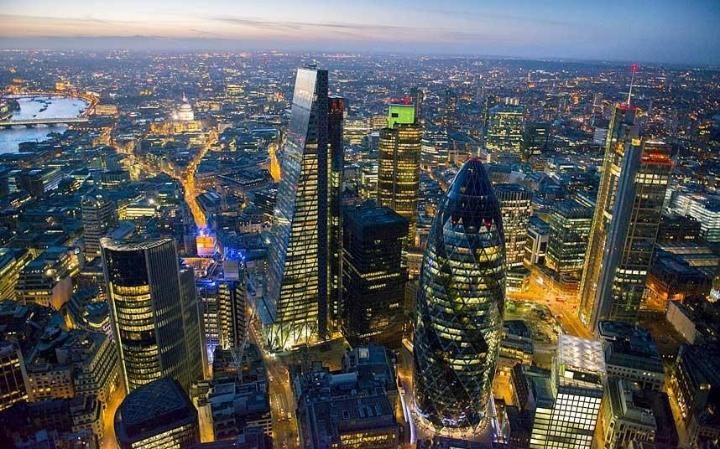 ing crisis leading to higher rents and shortage of investment in housing - Correct
ing crisis leading to higher rents and shortage of investment in housing - Correct
· Continued public sector jobs losses particularly in areas exposed to these jobs - such as rural areas and northern/western areas in Britain - Correct
· High levels of deposits required even with "help-to-buy" measures increases in deposits for buy-to-let are likely after the draconian new buy-to-let tax measures announced 2015-2016 - Correct
· Difficulty getting mortgages for the average person even with "help-to-buy" measures
· Lending to salary multiples offered by banks not keeping pace with rising house prices
· Reducing threat of terrorism in the UK (as ISIS defeated) - Correct
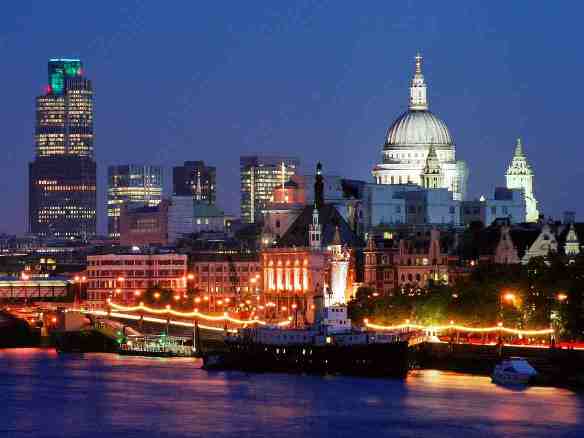
Overall, we believe the negative factors slightly outweigh the positive factors hence this points to stagnant or even slightly declining house prices. The twin threats of a Labour government and Brexit turmoil will definitely put a dampener on property demand and lead to lower building levels feeding through to further supply shortage in the coming years. The chance of the Tory minority government collapsing and Labour getting into power in the next two years is probably around 50% - quite high. - Correct
The house price ripple effect will continue to fan out from London continuing to move through places like Leicester/Derby, Birmingham, Manchester, Leeds to places like Liverpool, Newcastle, West Cornwall and Cumbria. The largest house price increase are likely to be in areas 130-250 miles from London, with housing shortages in East England driving prices up. Further healthy increases in house prices are expected in Londons lower priced suburbs like Ilford, Dagenham, Milton Keynes, Hatfield and Essex and north-eastern Kent - catching up with the rest of London. Some areas like Acton, Abbey Wood, Forest Gate, Ealing and Paddington will further benefit from the opening of the Elizabeth Line (Crossrail 1). Areas with strong business growth such as Slough, Reading, Maidenhead, Shoreditch-Whitechapel will also see prices robustly rising. - Broadly correct though the Crossrail areas did not benefit as much as predicted because Crossrail delayed and Brexit uncertainty
2019 Predictions

Property Price Predictions
1. London 0% (West London +2%)
2. SE England 0%
3. East Anglia +1%
4. Scotland +1%
5. SW England +1%
6. NW England +2%
7. Midlands +3% (East Midlands +4%)
8. Wales +3%
9. North England/NE +1%
10. Northern Ireland -1%
11. Yorkshire +3%
Broadly correct 0.2% in London and 2.2% in UK
Note: Published CPI and RPI inflation will start year at 2.3% and drop to 1.8% by end 2019 as the effects of the oil price feed through (though real inflation will be more like 3%). 2019 GDP was lower at 1.1%.
Rents
Rent rises will be in line with inflation rental property shortages will be counteracted by a reduction in net migration to levels of around 200,000 by end 2018 (down from 360,000 mid 2016). Draconian tax increases on buy-to-let landlords will also causes a tightening of the rental market particularly in London and SE England.
Other criteria
· US Dollar to the UK $1.27 / £1 Dollar increases slightly against Sterling
· UK £ to the Euro £1 / 0.88 Euro Sterling slightly recovering from lows late Nov 2017
· Oil price will fluctuate in band $48/bbl to $63 (Brent) in 2019 as OPEC cutback s not enough to offset increase in oil production from US Shale Oil. Ended year at $65/bbl
s not enough to offset increase in oil production from US Shale Oil. Ended year at $65/bbl
· UK Gas remains firm at price 46p/therm No - dropped to 28p/them by Sept
· UK Interest Rates no interest rate changes reducing inflationary pressures mean rate remain low - correct
· FTSE100 index stays same to 6700 by end 2019 No - ended higher at 7542
· UK Inflation CPI starts year rising from 2.3% end 2018 drops to 1.8% by Oct 2019 as Brexit uncertainties keep a lid on investment-growth and consumer spending Inflation ended year at 1.8% correct
· UK GDP stays around 1.5% - continuing the existing trend driven by population increases and suppressed by Brexit uncertainties GDP slightly lower at 1.1%
· Tensions between Saudi Arabia and Iran stay high (with continued proxy war in Yemen) - Correct. Russia possible invasion of eastern Ukraine - No. Nuclear arms race gathers momentum - Yes. Hotspots being US-North Korea - No, US-China (South China Sea) - No, US-Iran - Yes, Israel-Palestine.
· Euro interest rates stay the same in 2019 - Correct.
· US Interest rates increase a further 0.5% in 2019 - Correct (then started drop)
· UK unemployment stays low and stable at around 4% stable Close - ended dropped further to 3.8%
· Wage inflation ~2.2% throughout 2019 in both private and public sectors around the same as general CPI inflation of 2.3% to 1.8% - Yes
· GDP growth London 2.0%, North 1.0%, Midlands 1.5%, Scotland 1.0%. Wales 1.0% (overall 1.5% for 2019) Averaged 1.1% for the year slightly lower than predicted
· GDP China 5%, GDP India 5.5%, GDP Africa 2%, Global GDP 2.3%, UK 1.5%, USA 4.2%, Euroland 2.2% - as a whole over 2019 - China was 6%, USA 2.2%.
· Gold stays around $1270/ounce level, silver stays at $17/ounce level gold rose to $1480 and sliver to 18.
USA debt situation Lowering tax burden, higher US oil production and business friendly regulation will help lift GDP growth to around 4.2% - well above the trend of the last 10 years. This should lift t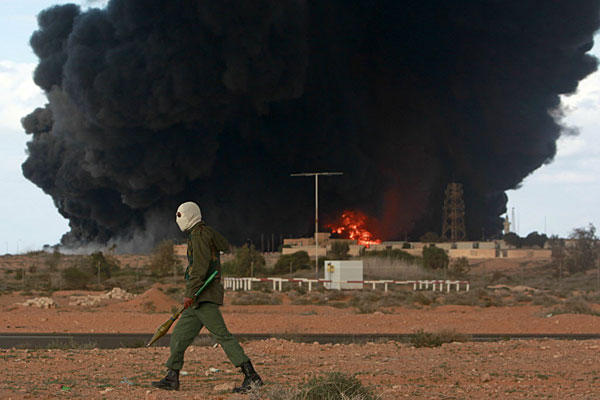 he pressure on the US dollar and debt situation unless a big recession starts. Trumps spending spree on infra-structure and military will also help business. Unemployment continued to drop. Threat of war with China, Russia, North Korea and/or Iran however will stay high in 2019
he pressure on the US dollar and debt situation unless a big recession starts. Trumps spending spree on infra-structure and military will also help business. Unemployment continued to drop. Threat of war with China, Russia, North Korea and/or Iran however will stay high in 2019
Inflation Decreased due to lower oil prices end 2018 in the UK this will mean interest rates will likely no further rises. Correct
Russia: The sanctions, only moderate oil oil prices and financial stresses continue to give recessionary pressures. President Putin expands military efforts to boost/maintain popularity at home with military incursions in the Middle East. Eastern Ukraine (or Eastern Estonia) could be another target for subversive or outright territorial invasion. The real focus for 2019 is Russian backing for Syrian government as the US pulls its troops out and Iran against a US backed Saudi Arabia. Russia relatively quiet (except northern Syria)
Middle East: House of Saud finances improve now oil prices have risen $52/bbl though budget does not balance until oil prices are around $90/bbl. Continued proxy war with Iran in places like Yemen, Iraq the ISIS threat or more or less defeated. Middle East and North Africa continue to be unstable with bad situations continuing in Libya. Correct
China South China Sea: Further military spats and escalations continue over disputed islands with USA at the forefront along with Japan high risk of some sort of naval war between USA (Trump) and China over the islands. This area was quiet.
The Trump Effect: Donald Trump will continue to be unpredictable. The USA's relationship with China and Venezuela in particularly will deteriorate further as trade wars continue increasing tensions by April 2019 as deal deadline lapses. His relationship with Russia will also seem to deteriorate. Presidential running of the US via Twitter - soundbites with often dangerous rhetoric will continue. Gold-silver prices will probably stay flat. A nuclear arms race will continue to build momentum in 2019 with big increases in military spending in USA, China and Russia. Putin and Trump and their egos will spar with each other more regularly through 2018. Global casualties of Trump's policies are likely to be China and Venezuela, also Iran and possibly Cuba, North Korea and other socialist countries. Trump's policies will continue to inflame tensions in Israel and with the Palestinians. The Middle East is likely to feel threatened by Trump and his policies. Broadly fairly accurate
will probably stay flat. A nuclear arms race will continue to build momentum in 2019 with big increases in military spending in USA, China and Russia. Putin and Trump and their egos will spar with each other more regularly through 2018. Global casualties of Trump's policies are likely to be China and Venezuela, also Iran and possibly Cuba, North Korea and other socialist countries. Trump's policies will continue to inflame tensions in Israel and with the Palestinians. The Middle East is likely to feel threatened by Trump and his policies. Broadly fairly accurate
Note: Just like last years prediction, sometime in the next 6 months to 4 years we expect a real economic-financial crisis in western developed nations caused by the US bond market meltdown. At this time, gold and silver prices will go ballistic (silver from $17/oz to $400/oz and gold from $1300/ounce to about $6400/ounce). The Dow Jones may rise, but inflation adjusted real terms will decline still in an overall cyclical bear market.
UK Politics
Brexit negotiations will continue to dominate the news with continued perceived Tory disarray and big arguments on what Brexit means, and what the final trade agreements will look like. More bitterness from all sides as the country continues to be spilt on this key issue - Terresa May will continue to be pulled left, right and centre with continued levels of turbulence as the light starts to appear at the end of the tunnel by mid-2019. Labour will be waiting in the wings to seize power if/when the Tory part trip up. Correct assessment finally leading to election that Tories won majority (Labour destabilizing strategy failed).

